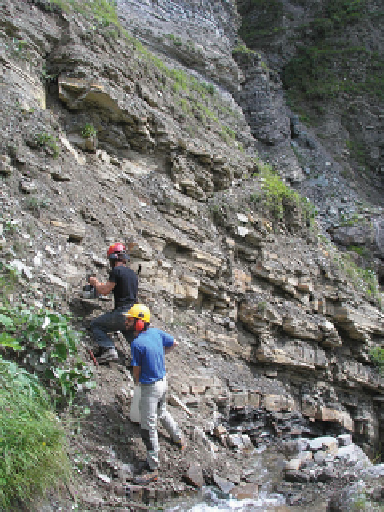Geology Reference
In-Depth Information
Figure 3.1
Sampling for
magnetostratigraphy in the
Dolomites with a gasoline
powered sampling drill. Only
one stratigraphic horizon
was sampled at each site for
this magnetostratigraphic
study. Three cores were
collected at each site. Source:
Spahn et al. 2013.
for drilling to the sampling locality, oriented hand samples can be col-
lected and cores can be drilled from them back at the laboratory. The
advantage of drilling cores in the field is that many independently oriented
cores can be collected and easily transported back to the laboratory for
trimming and measurement. Oriented blocks have the advantage that no
specialized, heavy equipment is needed in the field, but hauling and
shipping many blocks (at least three per horizon) back home can be
daunting.
3.2.3
Measurement and Demagnetization
Once the oriented samples, either cores or blocks, are back at the labora-
tory, the cores are trimmed to about 21-22 mm in length so that they can
be measured with a rock magnetometer. Most rock magnetometers used
today are superconducting and can measure a sample in about a minute or
two. To remove any secondary magnetizations that the sample may have
picked up since deposition, it must be progressively stepwise demagne-
tized, in which magnetization is removed from the sample, either by heating
or by being exposed to an alternating magnetic field, in small steps of
increasingly higher temperatures or fields until the sample is completely
demagnetized. The magnetizations that are the hardest to remove, at the
highest temperatures or alternating fields, are assumed to be the most


